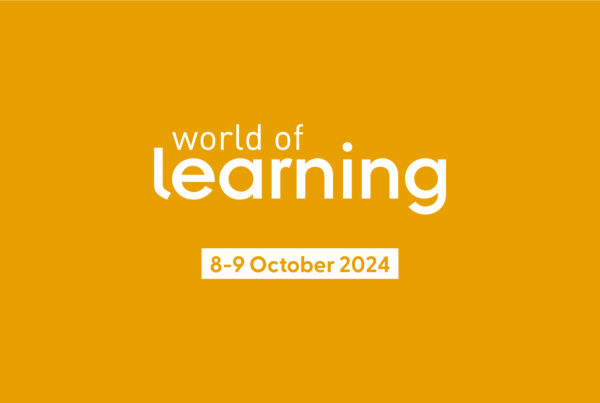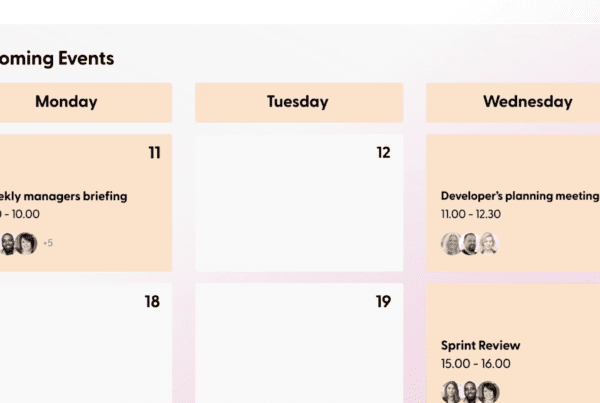Knowledge and skills gaps are costing UK businesses dearly – £6.6bn in fact! – and this financial cost is set to increase for those companies that don’t tackle these gaps. If you want to ensure your business isn’t losing out because of skills and knowledge gaps, then read the top seven ways you can identify knowledge and skills gaps now… 👇👇👇
What are knowledge gaps?
If you want to effectively tackle knowledge gaps in your organisation, you first need to be working with a solid definition as to what a knowledge gap actually is. 🤔💭
Here at Thirst, we define a knowledge gap as being the scenario whereby a task requires a certain level of knowledge to complete it; but the employee assigned to that task doesn’t possess that level of knowledge. 😔😟
In other words, the amount of knowledge the employee has is insufficient to complete the assigned task.
It’s important at this point to note what we mean by knowledge. Knowledge, in this context, refers to the theoretical understanding of how to do something. So, an employee with a knowledge gap won’t know the basic principles that are required to complete an assigned task. 🤯🤯
As you can imagine, this can have significant impacts on your business in terms of productivity, poor-quality work, employee burnout and dissatisfaction, unhappy customers, missed deadlines and more. 🥹😨
Knowledge gaps need to be addressed!
What are skills gaps?
Next, we come to skills gaps. What exactly is a skills gap?
Our definition at Thirst is that skills gaps refer to scenarios where employees don’t have the appropriate skills to complete a task. 😵💫😵💫
For example, an employee may be assigned to work on some complicated Microsoft Excel spreadsheets. However, if they are not very skilled at using Microsoft Excel, they may be unable to complete the assigned task. 💀🪦
This is a classic example of a skills gap, and one that – like knowledge gaps – can result in negative consequences for your business. 📉
Just as knowledge gaps need to be tackled, so do skills gaps!
Guide – confused about skills and knowledge? Then read our guide to the difference between skills and knowledge now! 💪🏋️♂️
The 7 ways to identify employee skills and knowledge gaps
Okay, with those definitions out of the way, let’s take a look at the ways in which you can effectively identify knowledge and skills gaps within your organisation.
Below are the seven ways to spot knowledge and skills gaps that every L&D professional should know. 👇👇👇
1. Establish a baseline
Before you start hunting for those elusive gaps, you and your team should first establish a solid baseline of data. 🖥️⌨️🖱️
By this, we mean figuring out the base level of knowledge that exists amongst your employees at present. The easiest way of doing this is to look at the data in your skills platform (if you haven’t got one, get one!). This can help you quantify the levels of skills and knowledge achievement amongst employees. 📋✏️
From there you should look at your business’ goals, the level of knowledge and skills required for each role and the outcomes that you need to achieve.
By doing this, you’ll have a baseline of data which can then be used to establish if skills and knowledge gaps have been reduced or closed in the future. 💯🔥
2. Examine employee turnover data
If your organisation is experiencing a high-level of employee churn, then this could be indicative of a number of learning and development based problems. 😟😔
For example, if an employee does not have the skills or knowledge required to do their job well, they’re likely to become frustrated. Should the issue persist for long enough, they’re likely to leave. 🏃♂️💨
This isn’t an isolated issue, either. According to a survey conducted by HR Daily Advisor, 60% of respondents said they found it difficult, or very difficult, to find the information they need to do their job. In short, they are lacking the skills and/or knowledge to do their job well.
It’s also worth bearing in mind what happens when people do leave your business. According to the same piece of research noted above, 42% of the skills and knowledge required to complete a job well, will only be held by one person currently in that job. 🤯
Thus, employees leaving your organisation can create significant skills and knowledge gaps.
That’s why it’s important for L&D professionals to provide employees with skills platforms that allow them to easily find and develop the skills and knowledge they need to do their jobs well. 👍😎
3. Analyse learning-content data
Arguably, the biggest source of information about knowledge and skills gaps within your organisation will be your skills platform. 💽💾
In particular, you want to conduct an audit of all the content within your learning experience platform.
Look at each topic or channel (depending on how you have organised your content), and identify areas that are thin on content. This could highlight areas where there is a lack of knowledge or skills within your business (after all, people can’t learn if they’re not provided with the necessary learning materials!). 🎓🎓
It can also be helpful to assess the content on your skills platform in relation to your business’ goals. For example, if your business is aiming to improve customer relations, then you need to ensure you are providing content that aligns with this goal. 🎯🏆
4. Look at performance data
Your business is (hopefully!) collecting performance data across a broad range of metrics.
This performance data can be a goldmine of insights, enabling L&D pros to quickly and easily identify potential gaps in knowledge and skills. 🔎🕵️
For example, if you have a sales team, it can be useful to look at their lead generation and conversion performance.
If you find that there are salespeople who are failing to generate a sufficient volume of leads, this could be indicative of a lack of knowledge on how to build a sales pipeline. 😭😭
Likewise, if you have call handlers who fail to conclude calls within an allotted time period, they may lack the conversational skills required to move callers on in the right way. 😢
Whatever the example, you’re likely to find that performance data yields numerous knowledge and skills gaps within your organisation.
5. Run a learning needs analysis
One of the more structured approaches you can take to identify skills and knowledge gaps within your business is to run what’s known as a ‘learning needs analysis’. 🤓
This is a systematic approach that sets out:
- The goals your organisation is trying to achieve. 🎯
- The matrix of skills and knowledge required to achieve these goals. 💪
- The current skills and knowledge base of your organisation’s employees. 🔧
By setting these data points down in a systematised fashion, gaps should literally become apparent on the page as you work through them. 😲⚡
In terms of closing the skills and knowledge gaps that certain individuals are presenting, you should work through a set of questions, such as:
- What skills and knowledge are needed for this person to progress? 🤔
- What is the individual’s current baseline of skills and knowledge?
- What is the individual’s skills and knowledge gap (be sure to quantify this with hard numbers where possible). ✋
Once you’ve answered these questions, it’ll be possible to create a learning pathway for each individual employee. 🤝🤝
6. Ask your employees!
This may seem like a particularly obvious point, but a key way of identifying skills and knowledge gaps is to ask your employees directly! 👄👀
Individual employees are usually acutely aware of their own knowledge and skills gaps, especially if said gaps are making them frustrated and unable to do their jobs. 😠😡
You can ask employees in a number of different ways, from formal surveys and one-to-ones through to more informal methods such as joining morning catch-ups and team meetings. 💭
Both formal data collection, and informal observation, can help L&D professionals to gain an intuitive and quantified understanding of gaps in knowledge and skills within a business. 🏅
7. Identify subject-matter experts
There are always ‘go to’ people within a business. They’re those people who are true ‘subject-matter experts’ and to whom people will revert if they’re not sure how to do something or need a piece of information. ❤️💪☝️
Not only are those individuals important for the information, knowledge, and skills they possess, but they can also help you to identify skills and knowledge gaps. ⏩⏩
If they’re regularly approached by the same employees, with the same queries, that’s generally a good sign that there’s a skills and knowledge gap that needs to be addressed. 💡💡
Close your skills and knowledge gaps with Thirst
If your business or organisation is suffering as a result of skills and knowledge gaps, then Thirst can help. 🔥🔥
As an AI-enabled skills platform, Thirst provides skills-based learning that’s personalised and tailored to each individual employee. 🎨👩🎨
Thirst allows your employees to create their own learning pathway, selecting the skills and knowledge they want to learn, the way in which they want to learn, and offering them up digestible content. 📈
Thirst also makes life easier for L&D professionals, identifying the skills and knowledge required by employees – at the outset – before delivering the most relevant content. 👇👇👇
Try Thirst today and enjoy unrestricted learning, unlimited possibilities!
For more e-learning insights, resources and advice, read the Thirst blog…
7 Trends That Will Shape Learning and Development in 2023: What L&D Professionals Need to Know | 7 Ways AI Will Change the Future of L&D in 2023 | Skills vs Competencies: What Are the Key Differences?






